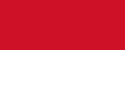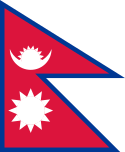Międzynarodowa Federacja Narciarska
| Język roboczy | |
|---|---|
| Siedziba | |
| Członkowie | 135 krajowych federacji[1] |
| Przewodniczący | Johan Eliasch[2] |
| Sekretarz Generalny | Michel Vion |
| Utworzenie | 2 lutego 1924 |
| Strona internetowa | |
Międzynarodowa Federacja Narciarska (oficjalny skrót: FIS od franc. Fédération Internationale de Ski) – międzynarodowa organizacja założona 2 lutego 1924 w Chamonix, mająca za zadanie dbanie o rozwój narciarstwa na świecie, organizowanie zawodów, formalizowanie przepisów i precyzowanie zasad.
Historia FIS
Międzynarodowa Komisja Narciarska
Początki FIS-u sięgają 18 lutego 1910, gdy podczas 1. Międzynarodowego Kongresu Narciarskiego w Oslo z udziałem: Anglii, Austrii, Czech, Francji, Hiszpanii, Niemiec, Szkocji i Szwecji powołano Międzynarodową Komisję Narciarską. Początkowo komisja miała się składać z dwóch członków – reprezentanta Skandynawii oraz Europy Środkowej. Ostatecznie w komisji zasiadło dwóch Skandynawów. W marcu 1911 kolejny kongres odbył się w Sztokholmie. Wtedy komisję powiększono do pięciu członków, a jako siedzibę wybrano Oslo. Na tym kongresie ustalono również regulamin międzynarodowych zawodów narciarskich. W 1913 liczbę członków komisji powiększono do siedmiu. 10 lutego 1922 podczas kongresu w Sztokholmie zdecydowano, że dyscypliny narciarskie będą rozgrywane na igrzyskach olimpijskich, jednak wyłącznie nieoficjalnie. Wtedy również zadecydowano o powstaniu Międzynarodowej Federacji Narciarskiej. Stosowną uchwałę o jej powołaniu podjęto 6 lutego 1923 na kolejnym kongresie (w Pradze).
Początki FIS
FIS został ostatecznie utworzony 2 lutego 1924 podczas 8. Międzynarodowego Kongresu Narciarskiego w Chamonix, z udziałem: Anglii, Austrii, Czechosłowacji, Finlandii, Francji, Jugosławii, Norwegii, Polski, Rumunii, USA, Szwajcarii, Szwecji, Węgier i Włoch. Został on zorganizowany podczas trwania Tygodnia Sportów Zimowych, który w 1926 uznano za I. Zimowe Igrzyska Olimpijskie.
FIS obecnie
Federacja ma swoją siedzibę w szwajcarskim Oberhofen am Thunersee. Co 2 lata odbywają się kongresy FIS-u, na których podejmowane są decyzje związane z rozwojem narciarstwa.
Adres siedziby:
- Marc Hodler Haus
- Blochstrasse 2
- CH-3653 Oberhofen am Thunersee, Schweiz
- Blochstrasse 2
Władze FIS
Przewodniczący
 Ivar Holmquist (1924–1934)
Ivar Holmquist (1924–1934) Nicolai Ramm Østgaard (1934–1951)
Nicolai Ramm Østgaard (1934–1951) Marc Hodler (1951–1998)
Marc Hodler (1951–1998) Gian Franco Kasper (1998–2021)
Gian Franco Kasper (1998–2021) Johan Eliasch (2021–obecnie)[2]
Johan Eliasch (2021–obecnie)[2]
Zarząd
Przewodniczący zarządu:
Wiceprzewodniczący zarządu:
Sekretarz generalny:
Członkowie FIS
 Albania
Albania Algieria
Algieria Andora
Andora Argentyna
Argentyna Armenia
Armenia Australia
Australia Austria
Austria Azerbejdżan
Azerbejdżan Bahamy
Bahamy Barbados
Barbados Belgia
Belgia Bermudy
Bermudy Białoruś
Białoruś Boliwia
Boliwia Bośnia i Hercegowina
Bośnia i Hercegowina Brazylia
Brazylia Brytyjskie Wyspy Dziewicze
Brytyjskie Wyspy Dziewicze Bułgaria
Bułgaria Chile
Chile Chińska Republika Ludowa
Chińska Republika Ludowa Chorwacja
Chorwacja Cypr
Cypr Czarnogóra
Czarnogóra Czechy
Czechy Dania
Dania Dominika
Dominika Egipt
Egipt Erytrea
Erytrea Estonia
Estonia Eswatini
Eswatini Etiopia
Etiopia Fidżi
Fidżi Finlandia
Finlandia Filipiny
Filipiny Francja
Francja Ghana
Ghana Grecja
Grecja Grenada
Grenada Gruzja
Gruzja Gujana
Gujana Gwatemala
Gwatemala Haiti
Haiti Hiszpania
Hiszpania Holandia
Holandia Honduras
Honduras Hongkong
Hongkong Indie
Indie Iran
Iran Irlandia
Irlandia Islandia
Islandia Izrael
Izrael Jamajka
Jamajka Japonia
Japonia Kajmany
Kajmany Kamerun
Kamerun Kanada
Kanada Kazachstan
Kazachstan Kenia
Kenia Kirgistan
Kirgistan Kolumbia
Kolumbia Korea Południowa
Korea Południowa Korea Północna
Korea Północna Kosowo
Kosowo Kuwejt
Kuwejt Lesotho
Lesotho Liban
Liban Liechtenstein
Liechtenstein Litwa
Litwa Luksemburg
Luksemburg Łotwa
Łotwa Macedonia Północna
Macedonia Północna Madagaskar
Madagaskar Malezja
Malezja Malta
Malta Maroko
Maroko Meksyk
Meksyk Mołdawia
Mołdawia Monako
Monako Mongolia
Mongolia Nepal
Nepal Niemcy
Niemcy Norwegia
Norwegia Nowa Zelandia
Nowa Zelandia Pakistan
Pakistan Palestyna
Palestyna Paragwaj
Paragwaj Peru
Peru Polska
Polska Południowa Afryka
Południowa Afryka Portoryko
Portoryko Portugalia
Portugalia Rosja
Rosja Rumunia
Rumunia Salwador
Salwador Samoa Amerykańskie
Samoa Amerykańskie San Marino
San Marino Senegal
Senegal Serbia
Serbia Słowacja
Słowacja Słowenia
Słowenia Sri Lanka
Sri Lanka Stany Zjednoczone
Stany Zjednoczone Sudan
Sudan Szwajcaria
Szwajcaria Szwecja
Szwecja Tadżykistan
Tadżykistan Tajlandia
Tajlandia Chińskie Tajpej
Chińskie Tajpej Timor Wschodni
Timor Wschodni Togo
Togo Tonga
Tonga Trynidad i Tobago
Trynidad i Tobago Turcja
Turcja Ukraina
Ukraina Urugwaj
Urugwaj Uzbekistan
Uzbekistan Wenezuela
Wenezuela Węgry
Węgry Wielka Brytania
Wielka Brytania Włochy
Włochy Wyspy Dziewicze Stanów Zjednoczonych
Wyspy Dziewicze Stanów Zjednoczonych Zimbabwe
Zimbabwe
Dyscypliny rozgrywane pod egidą FIS
- Biegi narciarskie
- Skoki narciarskie
- Kombinacja norweska
- Narciarstwo alpejskie
- Narciarstwo dowolne
- Snowboard
- Narciarstwo szybkie
- Narciarstwo na trawie
- Narciarstwo telemarkowe
Przypisy
- ↑ a b About the International Ski Federation (FIS). fis-ski.com, 2018-09-17. [dostęp 2020-01-01]. (ang.).
- ↑ a b Rafał Majchrzak: Oficjalnie: wybrano nowego prezydenta FIS! Został nim Johan Eliasch. sport.tvp.pl. [dostęp 2021-07-11]. (pol.).
Linki zewnętrzne
Media użyte na tej stronie
The flag of Navassa Island is simply the United States flag. It does not have a "local" flag or "unofficial" flag; it is an uninhabited island. The version with a profile view was based on Flags of the World and as a fictional design has no status warranting a place on any Wiki. It was made up by a random person with no connection to the island, it has never flown on the island, and it has never received any sort of recognition or validation by any authority. The person quoted on that page has no authority to bestow a flag, "unofficial" or otherwise, on the island.
Flag of Albania
Łatwo można dodać ramkę naokoło tej grafiki
Łatwo można dodać ramkę naokoło tej grafiki
Autor: See File history below for details., Licencja: CC0
The Flag of Dominica.
Flag of Ethiopia
Flaga Finlandii
The national and official state flag of Haiti; arms obtained from http://www.webchantier.com/. The civil flag can be found at here.
Autor: Pedro A. Gracia Fajardo, escudo de Manual de Imagen Institucional de la Administración General del Estado, Licencja: CC0
Flaga Hiszpanii
The Flag of India. The colours are saffron, white and green. The navy blue wheel in the center of the flag has a diameter approximately the width of the white band and is called Ashoka's Dharma Chakra, with 24 spokes (after Ashoka, the Great). Each spoke depicts one hour of the day, portraying the prevalence of righteousness all 24 hours of it.
Flag of Israel. Shows a Magen David (“Shield of David”) between two stripes. The Shield of David is a traditional Jewish symbol. The stripes symbolize a Jewish prayer shawl (tallit).
Flag of Jamaica. “The sunshine, the land is green, and the people are strong and bold” is the symbolism of the colours of the flag. GOLD represents the natural wealth and beauty of sunlight; GREEN represents hope and agricultural resources; BLACK represents the strength and creativity of the people. The original symbolism, however, was "Hardships there are, but the land is green, and the sun shineth", where BLACK represented the hardships being faced.
Flag of Canada introduced in 1965, using Pantone colors. This design replaced the Canadian Red Ensign design.
Flag of Liechtenstein
Flag of New Zealand. Specification: http://www.mch.govt.nz/nzflag/description.html , quoting New Zealand Gazette, 27 June 1902.
Flag of Portugal, created by Columbano Bordalo Pinheiro (1857-1929), officially adopted by Portuguese government in June 30th 1911 (in use since about November 1910). Color shades matching the RGB values officially reccomended here. (PMS values should be used for direct ink or textile; CMYK for 4-color offset printing on paper; this is an image for screen display, RGB should be used.)
Flag of Senegal
The national flag of Kingdom of Thailand since September 2017; there are total of 3 colours:
- Red represents the blood spilt to protect Thailand’s independence and often more simply described as representing the nation.
- White represents the religion of Buddhism, the predominant religion of the nation
- Blue represents the monarchy of the nation, which is recognised as the centre of Thai hearts.
Chinese Taipei Olympic Flag. According to the official website of Chinese Taipei Olympic Committee, Blue Sky(circle) & White Sun(triangles) above the Olympic rings is neither the National Emblem of the Republic of China, nor the Party Emblem of Kuomintang (KMT), but a design in between, where the triangles do not extend to the edge of the blue circle, as registered at International Olympic Committee in 1981 and digitally rendered in 2013. Besides, the blue outline of the five-petaled plum blossom is broader than the red one. Moreover, the CMYK code of the blue one and the Blue Sky & White Sun is "C100-M100-Y0-K0", and different from the Olympic rings (C100-M25-Y0-K0). Note that it's the only version recognized by IOC.
State Flag of Peru.

























































































































